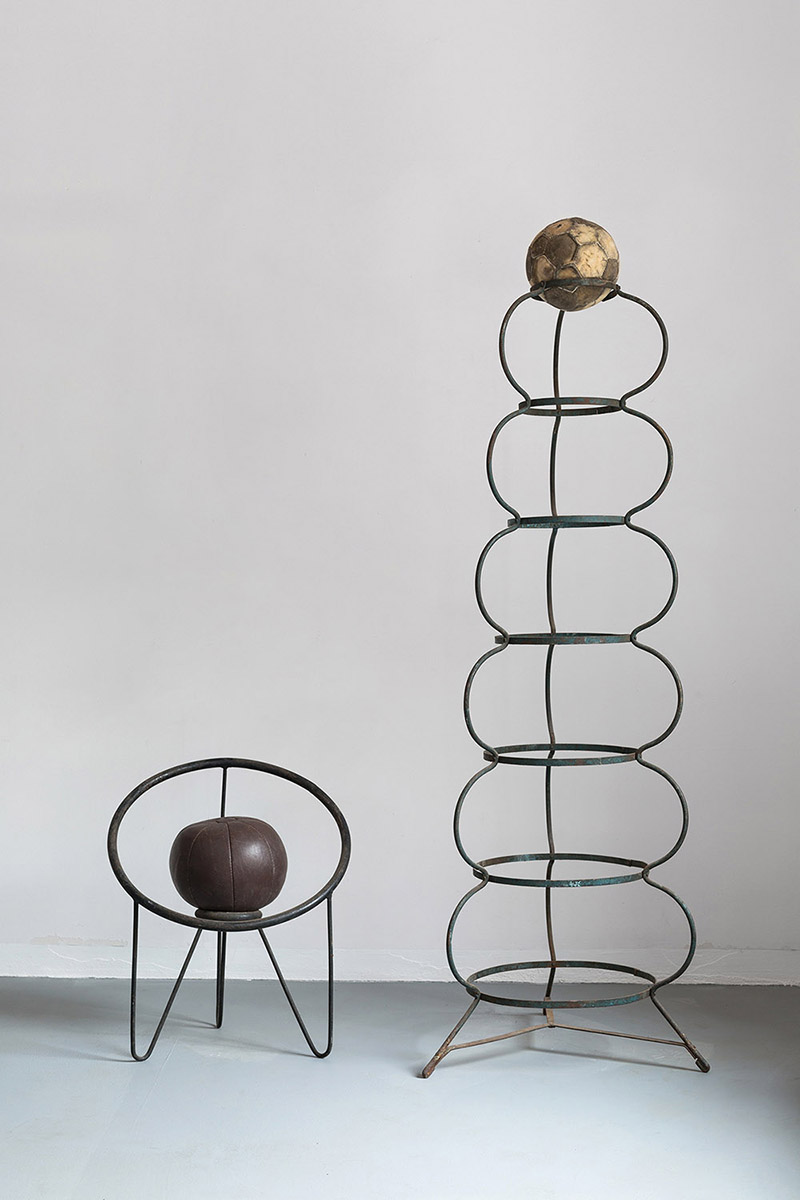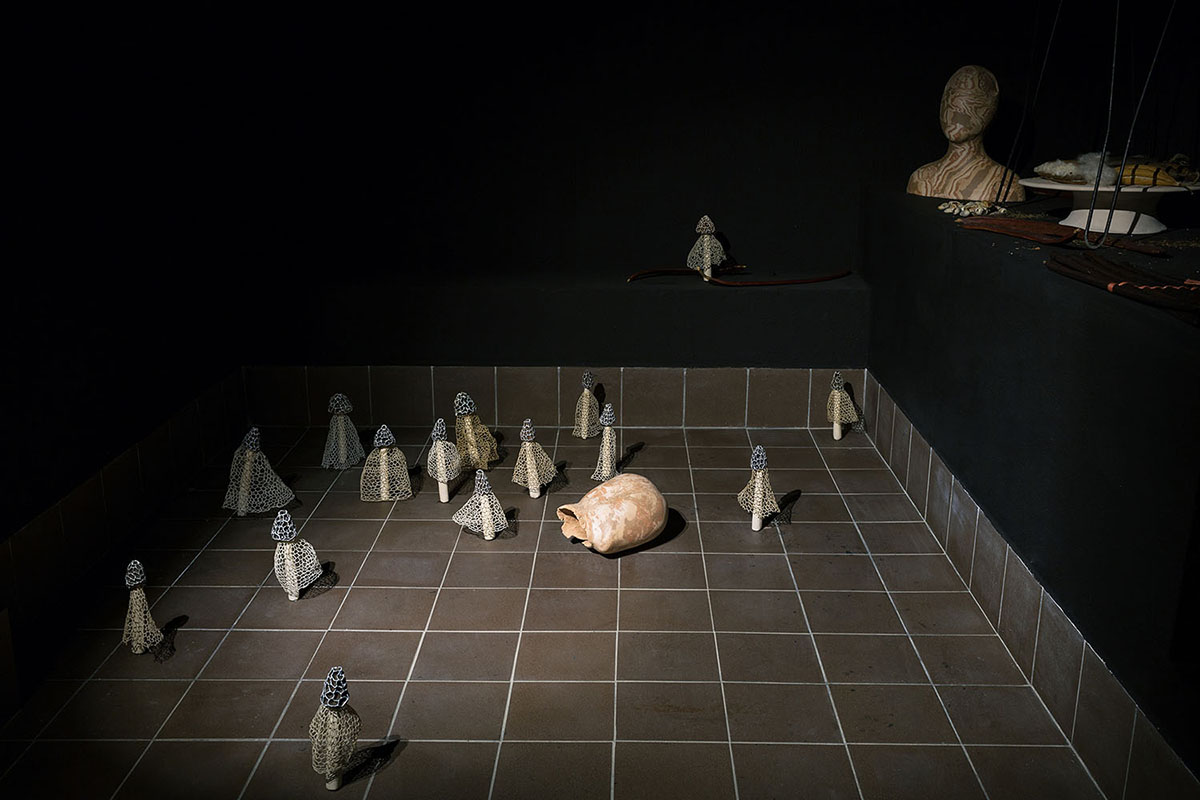“Retrogradation”
November 30, 2018–January 19, 2019
SiC! Gallery BWA Wrocław | Wrocław
curator: Joanna KobyłtMen, not Man, live on the earth and inhabit the world.
Hannah Arendt, The Human Condition, 1958
The term retrogradation comes from the field of astronomy. It describes the apparent backward movement of planets with respect of the stars in the background, which in reality is merely an optical illusion observed from Earth. This phenomenon was already noticed in ancient Greece and its Latin name originates from Hellenistic astrology. “Retro” means backward or in the past, and “gradus” denotes increase, orderly growth. The title of Patrycja Orzechowska’s exhibition is a word game, in which the prefix stands not so much for stylization of the past, but for a backward movement, looking back, without nostalgia. The core refers to the collecting strategy employed by the artist, who—by gathering various worn-out and often broken objects—creates a peculiar anti-collection. A non-anthropocentric, visual story about materiality, combining visions of the past and the future has been named after the sum of both meanings.
One of Patrycja Orzechowska’s artistic strategies is collecting. From the surplus of production surrounding us, she gathers worn-out, broken objects, those created by human hand and those that give such an impression, products of nature, industrial waste, fragments of a larger whole. Usually considered useless and worthless, they rarely—if ever—interest other collectors. The collection that has been growing for years serves as material for installations and assemblages, through which the artist shifts the meaning of objects from ordinary companions of everyday life to works of art. Taken out of their original context and incorporated into artworks, they begin an ontological journey between what they were, what they are and what they can be. They gain new value through the deconstruction of the existing relations between them and people. The collection is not to represent a modern tool to organise the world. The artist does not try to take control over the artifacts’ order of life; on the contrary, the objects are given back what is theirs—the essence of things.
Patrycja Orzechowska is interested in the longevity of objects—the change of their status from functional items to unnecessary waste, and then into an archaeological find recovered from the ground. She makes references to the Dadaistic idea of shifting meanings: from worthless rubbish she creates ready-mades, elevating them to the rank of artistic works, and then removes the resulting pieces from the field of art. Orzechowska’s installations are constantly changing, growing and mutating into new forms. This fluid state can be compared to reincarnation, in the cycle of which time is not linear, but has a circular structure. During her journey to Bali, the artist observed the custom of burning the dead during the Hindu ceremony of Ngaben. Inspired by the scenery of the smouldering cemetery, she created installations using the remains of ceramics, charred fruits and egg shells. The flames of the rite of passage unite objects, animal bodies and people into one matter. The black still lifes set by the artist against the background of the exotic landscape of Balinese nature seem incredible: were it not for the known context, they could appear out of time. They are neither the past, nor the future, nor the present. In the face of the constant circulation of matter, time is, after all, a relative value.
The materiality presented in the exhibition refers to the medium that the SiC! Gallery was once dedicated to. The history of utility—what glass and ceramics were used for and what ideas they supported—constitutes an interesting theme in the history of people’s relations with the world around them. Ceramics is the oldest product of human activity, inextricably linked with the earth, owing it its beginning and the end. We learn about the clay vessels which, next to the pebbles, were the first objects made by humankind, on the basis of research into the ground on which we walk and in which we bury the dead. In the artist’s works we will see several incarnations of ceramics, while glass, in its alchemical nature, will refer to laboratory, scientific and cosmic motives.
Retrogradation by Patrycja Orzechowska is a fantasy about the world without humans, in which objects play the main part. Our culture identifies humanity with omnipotence, as a rule there is no room for other, extrahuman subjectivities. Meanwhile, it is the surrounding things that tell us more about ourselves than the words we say. The ever-produced, used and thrown away materiality poses a challenge that we will have to face in the future, says the artist. This challenge can be developed into positive and creative, as well as negative, destructive scenarios. Everything depends on us.
Text by Joanna Kobyłt
Photos by Alicja Kielan | Courtesy of BWA Wrocław










































